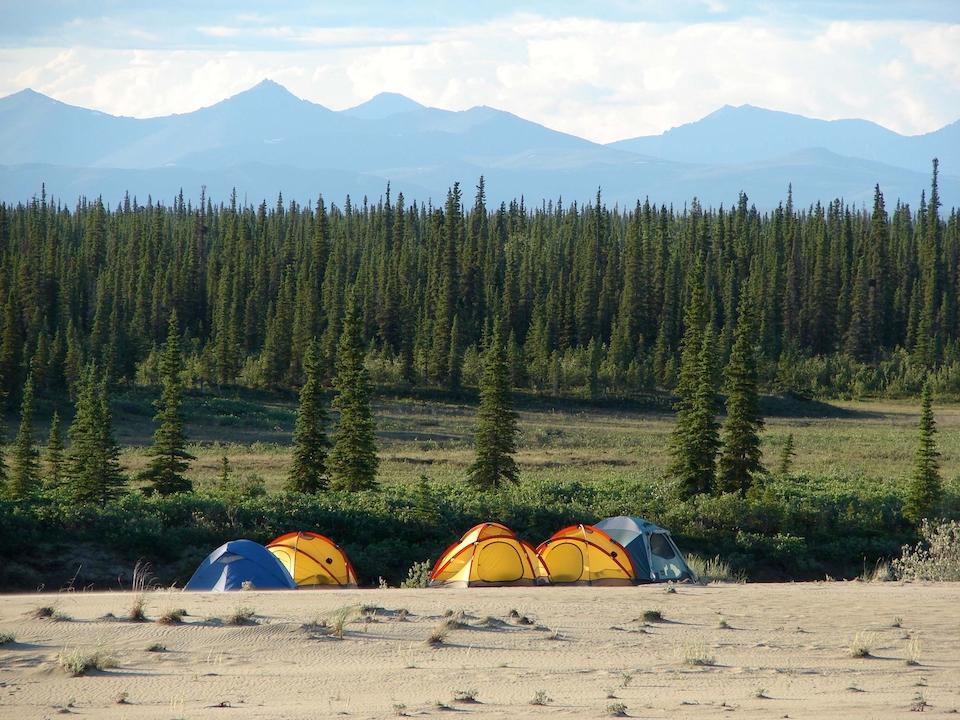
Sand provides more comfort than tundra for sleeping on at Kobuk Valley National Park in Alaska/NPSSand provides more comfort than tundra for sleeping on/NPS
Living in Alaska for the past 38 years gave me a unique opportunity to visit some exceptionally cool and out-of-the-way wilderness in our 49th state. When I started with the National Parks Conservation Association in 2002, I quickly embraced the need to visit all 16 of Alaska’s national park units. That included Kobuk Valley National Park, located about 35 miles north of the Arctic Circle and only accessible by small plane or river boat. Kobuk Valley has been a park since the Alaska National Interest Lands Conservation Act was signed by President Carter in 1980.
There are actually three dune fields in the park, remnants of a much larger 200,000-acre dune field that was created during the last Ice Age, which began about 28,000 years ago. The area around Kobuk Valley was not glaciated, so the winds gathered sand scoured by the surrounding glaciers and created the dunes. When the ice retreated about 14,000 years ago, the boreal forest began reclaiming the sand, leaving us with the three remnant dune fields we have today. The largest is the Great Kobuk Sand Dunes, 16,000 acres of the best and most accessible sand in the most northerly active dune field in the world.
Visiting Kobuk Valley and the Great Kobuk Sand Dunes begins with an Alaska Airlines flight to Kotzebue, where we chartered a small plane (see the park’s commercial operators for air taxi options) for our three-day dune camping adventure. Some air taxi operators land on wheels in the dunes and others land on floats on the Kobuk River. I had been there once before with the National Park Service and knew about the sand landing option, which saved us from a two-mile hike from the river through the mosquito-infested boreal forest to the dunes. It is much easier to land near where you want to camp.

Dunes and trees at Kobuk Valley National Park. The Great Kobuk Sand Dunes cover 25 square miles in the southern part of the park, but thousands of years ago the dune fields were about 350 square miles/NPS
There were four of us, including several NPCA staffers from Washington, D.C. My supervisor was pretty nervous about camping in bear country. Just because we were camped on sand doesn’t mean there are no bears, so I secured a small electric fence to put up around her tent so she could sleep anxiety-free. We saw both wolf and bear tracks in the dunes, and I made certain my traveling companions understood how to behave in bear country. Each had their own can of bear spray. You need good backcountry experience to do this trip safely.
Hiking on sand dunes, surrounded by boreal forest above the Arctic Circle was surreal. Before I got there, I could not imagine sand dunes in the interior arctic. We spent two days exploring on day–long walks, marveling at the wave patterns in the sand created by the ever present wind, hiking to the top of the higher dunes and rolling down like we were kids, and photographing wildflowers growing in sand. The Western Arctic Caribou Herd migrates through this area, and we wished our trip had coincided with the right time of year to experience caribou on sand.
And we pondered just how long before the forest totally reclaims these dunes. It won’t happen for a while, so you have plenty of time to get out here and enjoy this totally unique park.
Editor's note: Jim Stratton long served as the Alaska regional director for the National Parks Conservation Association. For more of his stories, check out his blog.


 Support Essential Coverage of Essential Places
Support Essential Coverage of Essential Places






